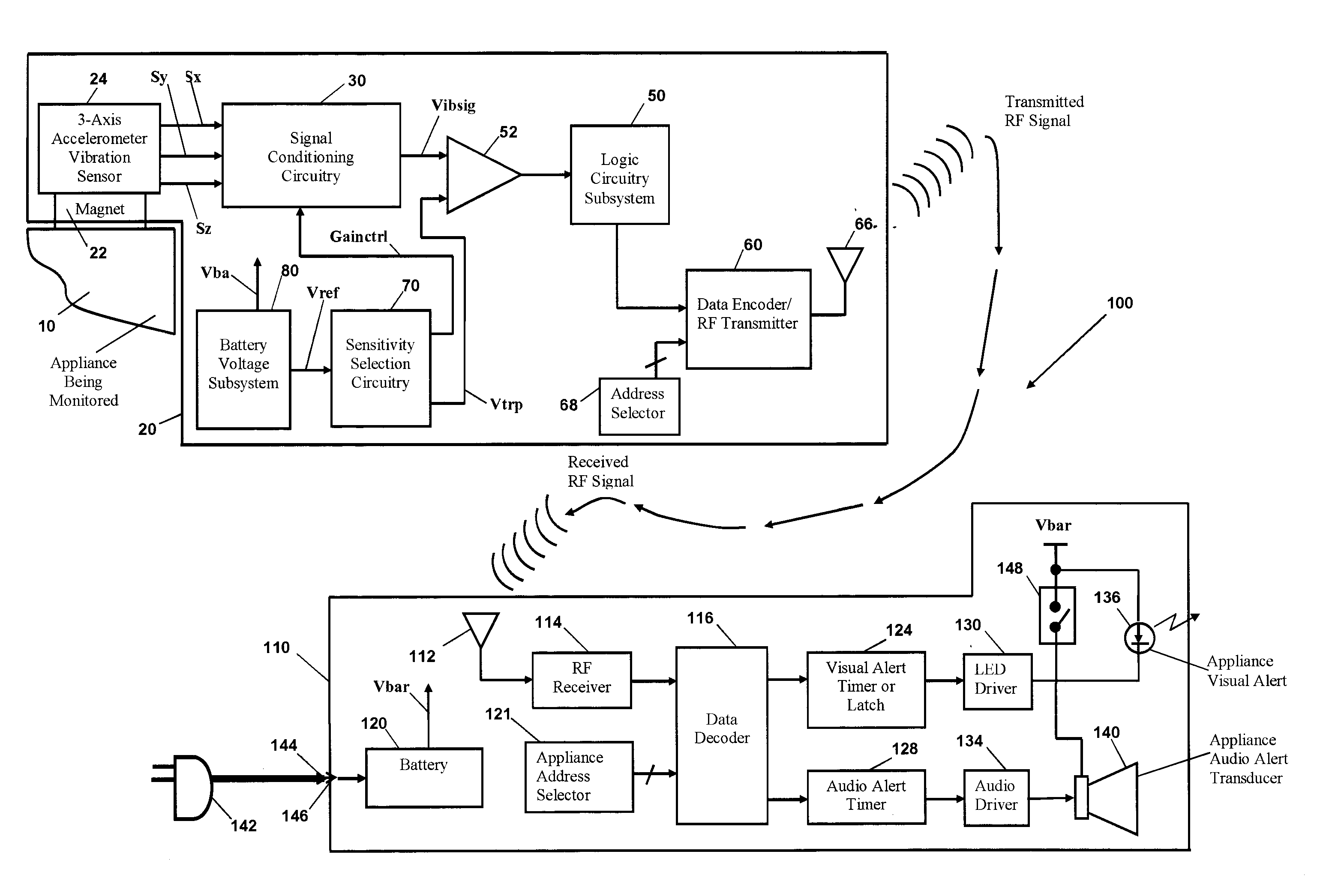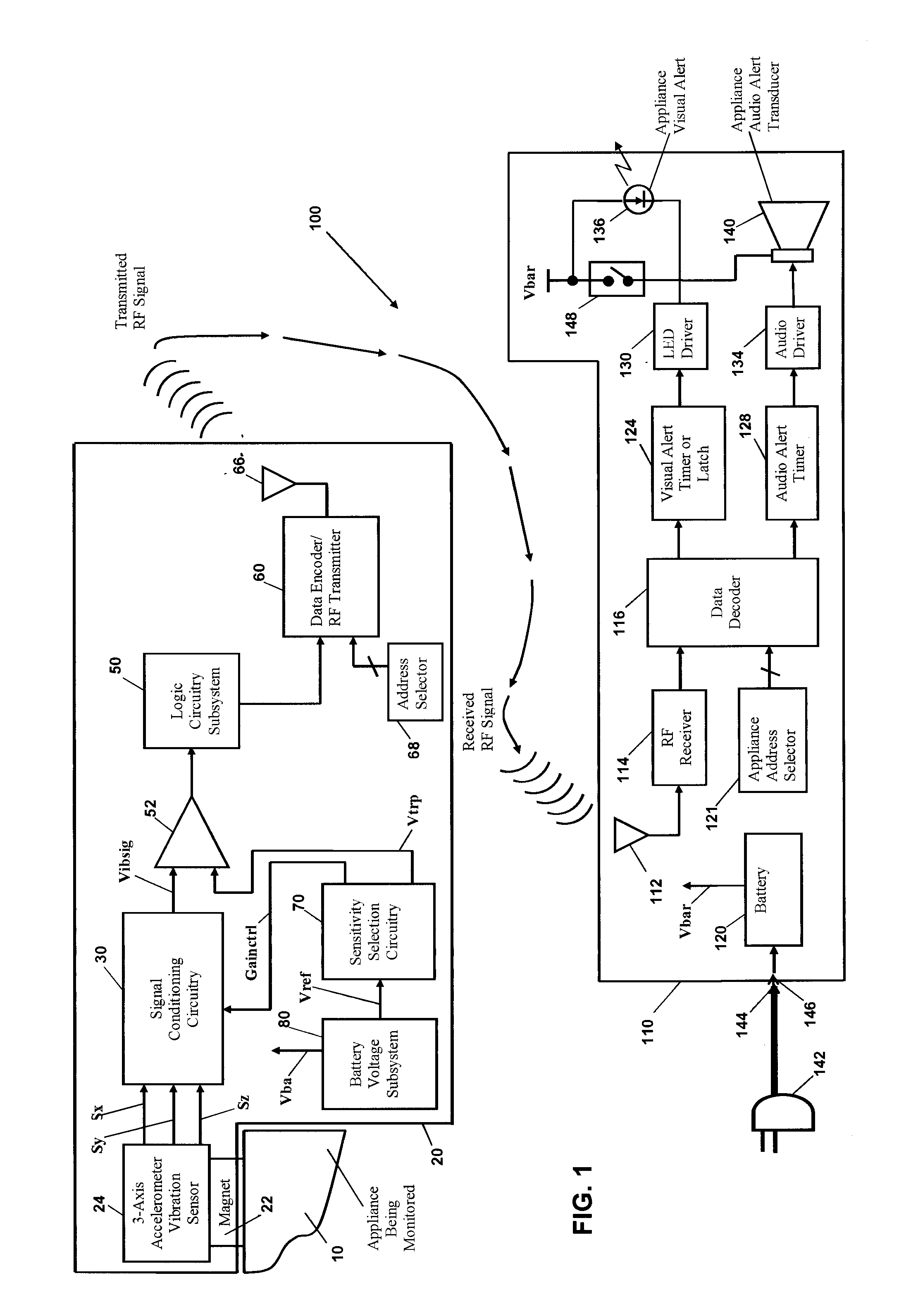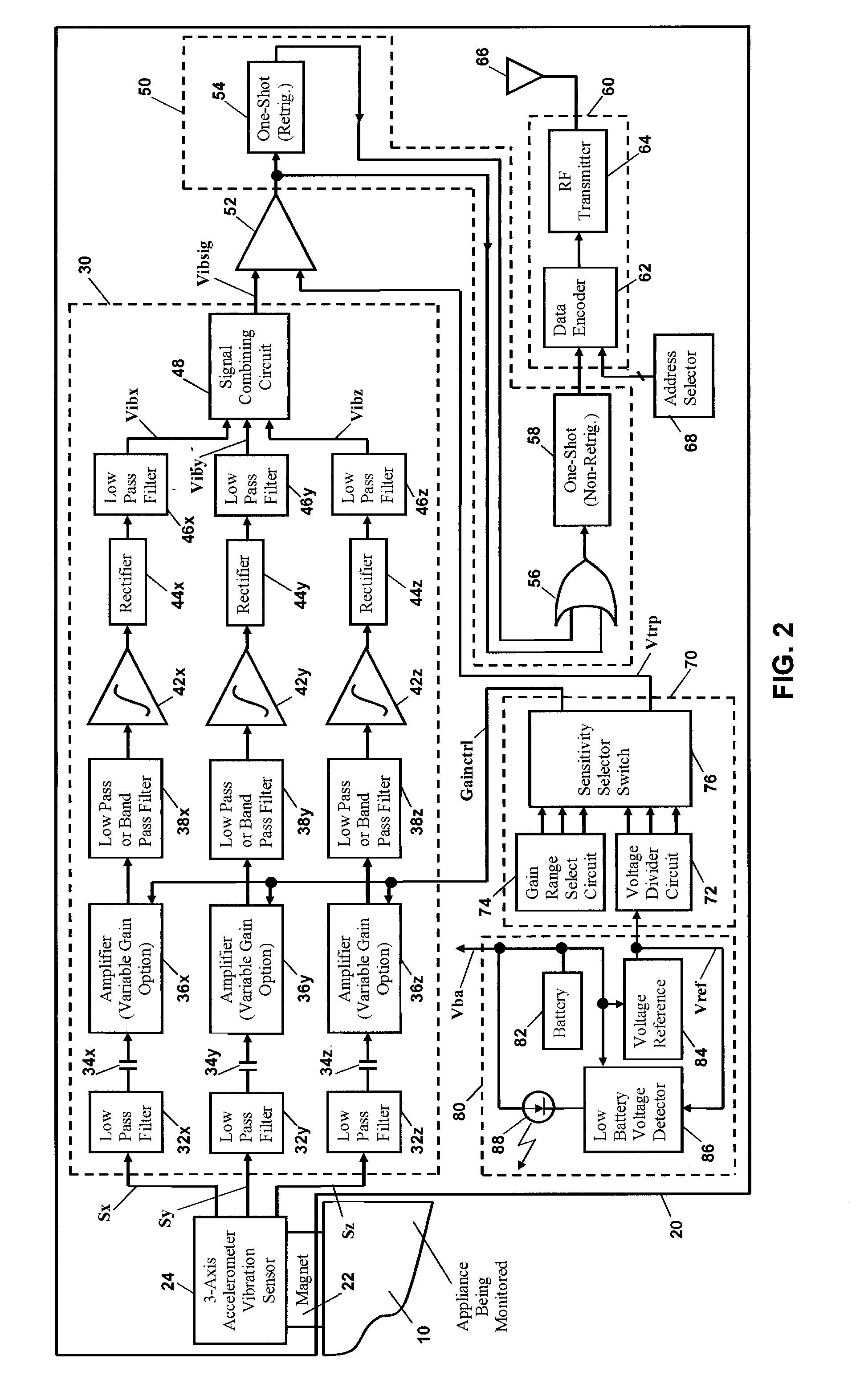Machine or device monitoring and alert method and system
a technology for monitoring and alerting devices, applied in the field of machine or device monitoring and alert methods and systems, can solve problems such as troublesome problems, individual loses track of the operation cycle of the appliance, and the appliance goes unused for long periods of time, and achieves the effect of improving accuracy
- Summary
- Abstract
- Description
- Claims
- Application Information
AI Technical Summary
Benefits of technology
Problems solved by technology
Method used
Image
Examples
second embodiment
[0049]Combining Circuit 48 does not saturate for reasonable values of Vibx, Viby, and Vibz. In the invention, Signal Combining Circuit 48 derives the output “Vibsig” according to the following equation (often called the “square root of the sum of the squares” equation):
Vibsig=K2*]{square root over ([(Vibx)+(Viby)2+(Vibz)2)}{square root over ([(Vibx)+(Viby)2+(Vibz)2)}{square root over ([(Vibx)+(Viby)2+(Vibz)2)}]
K2, like K1, is a constant which is empirically derived such that “Vibsig” does not saturate for reasonable values of Vibx, Viby, and Vibz.
[0050]However it is derived by Signal Combining Circuit 48, “Vibsig” is sent to the positive input of Comparator 52. The purpose of Comparator 52 is to trip high when the amplitude of the appliance's vibration is above some predetermined value, which means the appliance is still in operation. Comparator 52 has a small amount of hysteresis, produced by using a small amount of positive feedback around the comparator, to reduce false triggerin...
case 1
[0090 is the simplest and cleanest case. It occurs when no temporary extraneous “On” / “Off” fluctuations occur while the Device Being Monitored 10 makes the transition from the “Off “state to the “On” state, and then from the “On” state to the “Off” state. Case 2 is the more complicated case. It occurs when temporary extraneous “On” / “Off” fluctuations do occur while the Device Being Monitored 10 makes the transition from the “Off “state to the “On” state, and then from the “On” state to the “Off” state.
[0091]We shall explain the oscillogram signals for Case 1, depicted in FIG. 16A, first. Please note that, for completeness, we may discuss the inputs and outputs of Inverter 213, OR Gate 214, and OR Gate 56, but these signals are not shown in the oscillograms of FIG. 16A. An explanation of how the Power-Up Transition State is detected for Case 1 follows. All the oscillograms start out at time t0, when the Device Being Monitored 10 is in the “Off” state and CompOut is low. As long as th...
PUM
 Login to View More
Login to View More Abstract
Description
Claims
Application Information
 Login to View More
Login to View More - R&D
- Intellectual Property
- Life Sciences
- Materials
- Tech Scout
- Unparalleled Data Quality
- Higher Quality Content
- 60% Fewer Hallucinations
Browse by: Latest US Patents, China's latest patents, Technical Efficacy Thesaurus, Application Domain, Technology Topic, Popular Technical Reports.
© 2025 PatSnap. All rights reserved.Legal|Privacy policy|Modern Slavery Act Transparency Statement|Sitemap|About US| Contact US: help@patsnap.com



